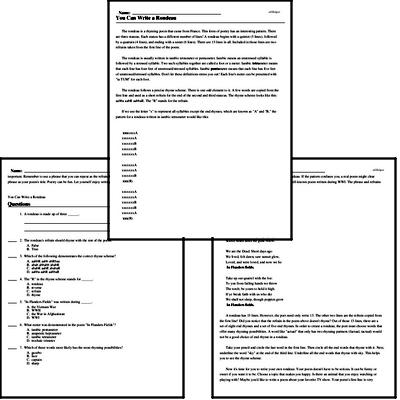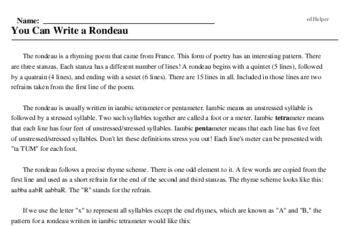You Can Write a Rondeau
The rondeau is a rhyming poem that came from France. This form of poetry has an interesting pattern. There are three stanzas. Each stanza has a different number of lines! A rondeau begins with a quintet (5 lines), followed by a quatrain (4 lines), and ending with a sestet (6 lines). There are 15 lines in all. Included in those lines are two refrains taken from the first line of the poem.
The rondeau is usually written in iambic tetrameter or pentameter. Iambic means an unstressed syllable is followed by a stressed syllable. Two such syllables together are called a foot or a meter. Iambic tetrameter means that each line has four feet of unstressed/stressed syllables. Iambic pentameter means that each line has five feet of unstressed/stressed syllables. Don't let these definitions stress you out! Each line's meter can be presented with "ta TUM" for each foot.
The rondeau follows a precise rhyme scheme. There is one odd element to it. A few words are copied from the first line and used as a short refrain for the end of the second and third stanzas. The rhyme scheme looks like this: aabba aabR aabbaR. The "R" stands for the refrain.




